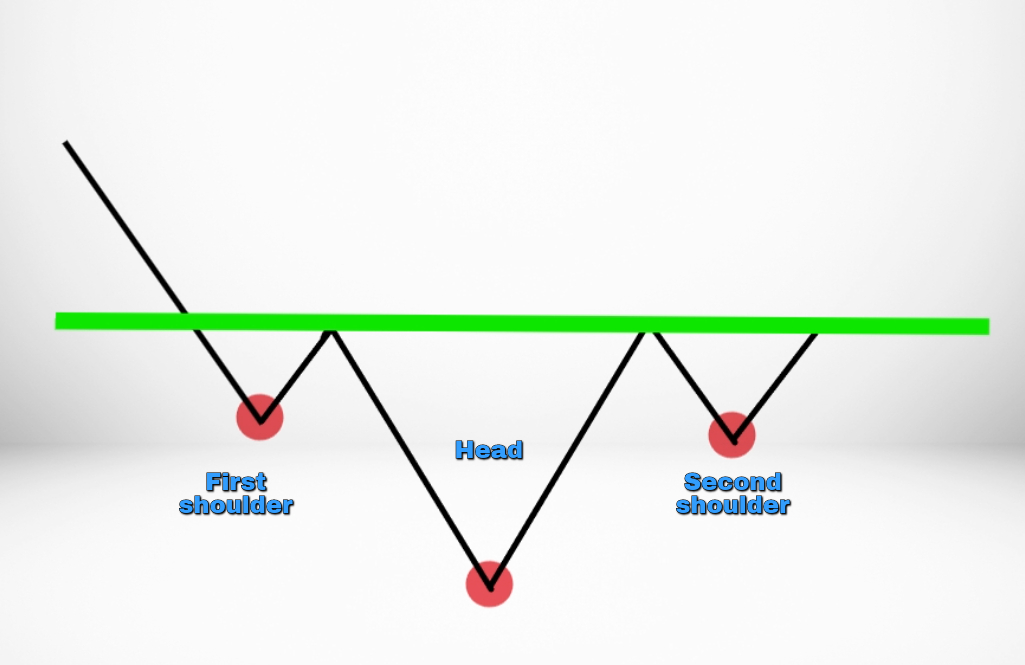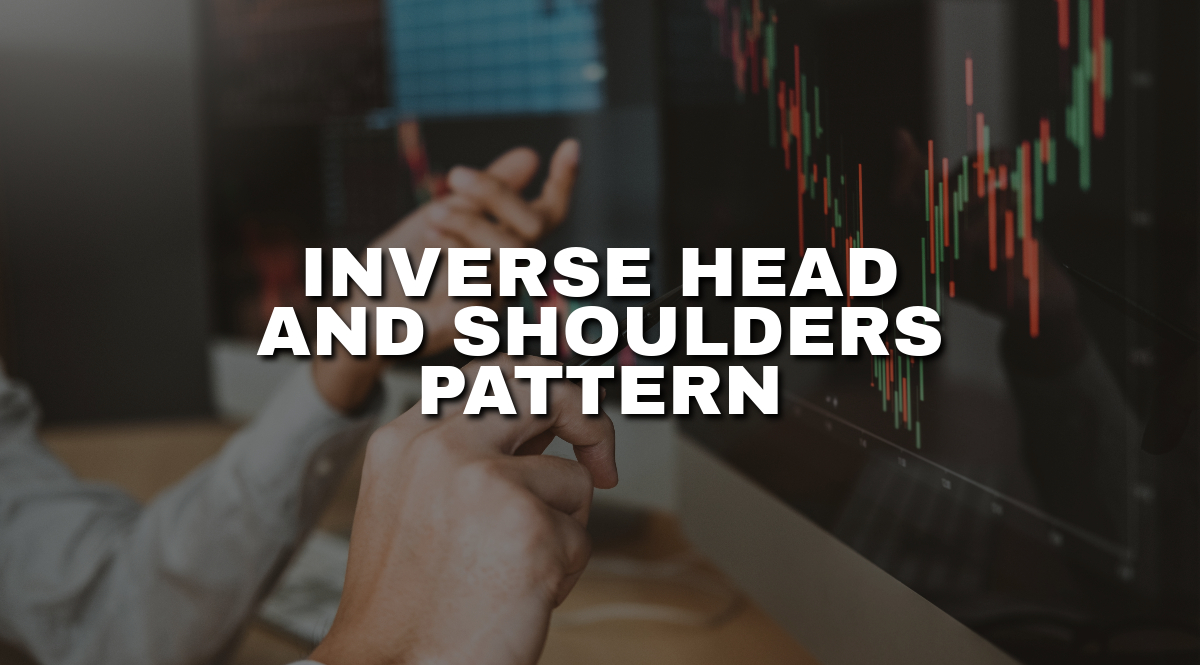
Inverse Head and Shoulders Pattern Rules Explained
Traders and investors use the inverse head and shoulders pattern to identify potential trend reversal points in financial markets, such as stocks, currencies, commodities, etc.
Key takeaways
- The inverse head and shoulders pattern is essentially the reverse of the head and shoulders formation.
- This pattern exhibits three troughs, with the central one being deeper than the two flanking it.
- It typically emerges during a downtrend.
This pattern is essentially the opposite of the traditional head and shoulders pattern, which signals a potential reversal of an uptrend. In this comprehensive guide, we will delve deep into the definition, rules, and various aspects of the inverse head and shoulders pattern to help you understand how to spot it and use it effectively in your trading strategies.
Understanding the inverse head and shoulders pattern
The inverse head-and-shoulders pattern is a bullish reversal pattern that typically forms at the end of a downtrend. It consists of three distinctive troughs (valleys or lows) on a price chart, which visually resemble a human head and shoulders in an upside-down orientation. These three key components are:
Left shoulder: The first trough, represents a lower low in the price movement, indicating the continuation of the existing downtrend.
Head: The central trough, which is the lowest point in the pattern, indicates increased selling pressure and potential exhaustion of the downtrend.
Right shoulder: The third trough, which is higher than the head but lower than the left shoulder. This indicates that the selling pressure is decreasing, and a potential trend reversal may be imminent.
Connecting these troughs, you can visualize a “neckline,” which is a straight line drawn through the peaks between the left shoulder and the head, extending towards the right shoulder.
The Inverse Head and Shoulders pattern suggests a shift from a bearish trend to a bullish trend, making it a valuable tool for traders looking to identify potential buying opportunities.
The psychology behind the pattern:

To understand the psychology behind the inverse head and shoulders pattern, it’s essential to consider what happens in the market during its formation:
Left shoulder: During a downtrend, pessimism prevails, and sellers dominate the market. The left shoulder represents a temporary pause or consolidation in the downtrend.
Head: The head marks a significant low, often resulting from a climax in selling pressure. Traders and investors who were bearish may start to doubt the sustainability of the downtrend, leading to a potential change in sentiment.
Right shoulder: The price rebounds from the head but fails to reach the level of the left shoulder. This suggests that while selling pressure still exists, it’s weakening. Traders who missed the initial reversal may start to enter long positions, anticipating a trend reversal.
When the price breaks above the neckline, it confirms the pattern and signals a potential trend reversal from bearish to bullish. Traders often use this breakout as an entry point to go long (buy).
Inverse head and shoulders pattern rules and characteristics
To successfully identify and trade the inverse head and shoulders pattern, you need to follow head and shoulders pattern rules and be aware of its key characteristics.
Key characteristics:
Symmetry: While the left and right shoulders don’t have to be perfectly symmetrical, they should have a similar shape and be roughly aligned horizontally.
Volume: Volume plays a crucial role in confirming the pattern. Typically, the volume should decline as the pattern forms, indicating reduced selling pressure during the right shoulder’s development. When the price breaks above the neckline, it’s ideal to see a noticeable increase in volume, signaling strong buying interest.
Neckline: The neckline serves as a critical reference point. It can be horizontal, sloping, or even diagonal, depending on the specific chart pattern. A breakout above the neckline is a confirmation of the pattern, while a breakdown below it negates the pattern.
Depth of the head: The head should be lower than the left shoulder and form a distinct trough. A deeper head often indicates a more powerful reversal potential.
Rules for identifying the inverse head-and-shoulders pattern

To confirm the presence of the inverse head and shoulders pattern, traders should follow these rules:
Downtrend: The pattern must form after a prolonged downtrend, indicating a potential reversal of the bearish trend.
Three troughs: There must be three distinct troughs: the left shoulder, the head, and the right shoulder. These troughs should be visually recognizable.
Neckline: Draw a neckline connecting the peaks between the left shoulder and the head. Extend it to the right shoulder. The neckline should act as resistance during the pattern’s formation and support once broken.
Volume confirmation: Volume should typically decline as the pattern forms, indicating a decrease in selling pressure. When the price breaks above the neckline, there should be a notable increase in volume, confirming the bullish breakout.
Breakout confirmation: The pattern is confirmed when the price breaks decisively above the neckline. Traders often wait for a close above the neckline to confirm the breakout.
Price target: To estimate the potential price target following the breakout, measure the distance between the head and the neckline. Then, add this distance to the breakout point. This projection gives you a rough idea of where the price might move after the pattern confirmation.
Trading strategies and considerations
Entry and exit strategies:
Trading the Inverse Head and Shoulders pattern involves specific entry and exit strategies:
Entry: Traders often enter long positions (buy) when the price breaks above the neckline. Some traders may use a stop-limit order, which triggers a buy order once the price reaches a predefined level above the neckline.
Stop-loss: To manage risk, it’s essential to place a stop-loss order below the neckline or the right shoulder’s low. This protects against potential false breakouts and minimizes losses if the pattern fails to materialize.
Take profit: Traders may set a profit target based on the pattern’s projected price target. However, it’s crucial to monitor the market and adjust the take profit level as the trade progresses.
Considerations and pitfalls

While the inverse head and shoulders pattern can be a valuable tool for traders, it’s essential to be aware of potential pitfalls and consider various factors:
False breakouts: Not all patterns lead to successful trend reversals. False breakouts can occur, where the price briefly moves above the neckline but then reverses. Using stop-loss orders and waiting for confirmation can help reduce the impact of false breakouts.
Confirmation timeframe: Traders often use multiple timeframes to confirm the pattern. A breakout on a lower timeframe might not be as reliable as a breakout on a higher timeframe.
Market conditions: The effectiveness of the pattern can vary depending on market conditions. It may work better in trending markets than in sideways or ranging markets.
Volume confirmation: Always pay attention to volume when trading this pattern. A lack of volume during a breakout could indicate a weaker reversal.
Risk management: Proper risk management is crucial. Never risk more than you can afford to lose on a single trade, and consider position sizing and portfolio diversification.
Confirmation: It’s crucial to wait for confirmation before taking a trade. Entering prematurely can lead to losses if the pattern fails to develop.
In summary, the inverse head and shoulders pattern is a valuable technical analysis tool that helps traders identify potential bullish reversals in financial markets. It is important to have at least a general understanding of inverse head and shoulders pattern rules.
However, like all technical analysis tools, it’s important to use the inverse head and shoulders pattern in conjunction with other indicators and risk management techniques.
Additionally, continuous practice and real-world experience are essential for mastering the art of pattern recognition and trading. Always remember that no pattern is foolproof, and risk management should be a top priority in your trading endeavors.
The post Inverse Head and Shoulders Pattern Rules Explained appeared first on FinanceBrokerage.





























